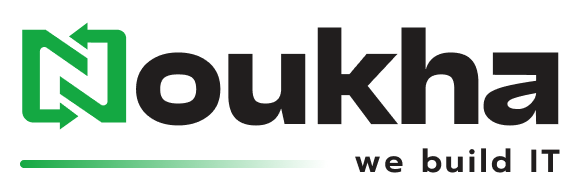You know what’s funny? I was talking to a client last week who spent three hours explaining why his startup absolutely needed the fastest servers money could buy. Then, in the same breath, he mentioned how his company’s mission is all about sustainability and reducing waste.
The irony wasn’t lost on me.
Look, I’ve been in this industry long enough to see trends come and go. But this whole green coding movement? It’s not just another buzzword that’ll disappear in six months. It’s actually changing how we think about building applications – and honestly, it’s about time.
Here’s something that might blow your mind: the internet uses about 10% of all electricity globally. Yeah, you read that right. More than entire countries. And every time someone loads your poorly optimized website or uses your resource-heavy app, they’re contributing to that number.
But here’s where it gets interesting for businesses looking at web application solutions in Coimbatore (and everywhere else, really). Going green isn’t just about feeling good anymore. It’s becoming a legitimate competitive advantage.
The Problem Nobody Talks About
Most business owners don’t lose sleep over whether their code is “clean” or “dirty.” They care about whether it works, whether users like it, and whether it makes money. Fair enough – that’s business.
But here’s what I’ve learned after working with dozens of companies: bad code is expensive code. Really expensive.
I remember this e-commerce client from Chennai – they couldn’t figure out why their hosting bills kept climbing even though their traffic was steady. Turns out, their product pages were so bloated that loading a single item required the same server resources as displaying an entire catalog. We’re talking about 400% more processing power than necessary.
When web and mobile application development services ignore efficiency, you’re basically burning money. And in today’s market, who has money to burn?
The environmental angle? That’s just the cherry on top. Though increasingly, it’s a cherry that customers and partners actually care about.
Green Hosting: Not as Boring as It Sounds
Okay, “green hosting” probably sounds like something your IT guy mentions during budget meetings while everyone’s checking their phones. But stick with me here.
Five years ago, finding hosting powered by renewable energy was like hunting for unicorns. Today? It’s everywhere. Amazon, Google, Microsoft – they’re all racing to carbon neutrality. But most businesses still don’t realize they can tap into this without changing anything about how their apps work. 
A web app design company that actually knows what they’re doing will factor this into their recommendations upfront. Not because they’re tree-huggers (though some might be), but because the numbers make sense.
I had a SaaS client running a customer management platform. Switching to green hosting cut their infrastructure costs by 35% while handling the same load. Same performance, lower bills, smaller carbon footprint. Sometimes business really is that simple.
The Money Talk (Because Let’s Be Real)
Look, I could talk about saving polar bears all day, but you probably want to know what this means for your bottom line. So let’s talk numbers.
Efficient code costs less to run. Period. A custom web app developer who knows optimization can typically reduce your server requirements by 30-40% without touching functionality. That’s not just good for the environment – that’s good for your monthly hosting bill.
But there’s another angle most people miss. Customer expectations are changing, especially in markets like the US and India. B2B buyers are starting to ask about sustainability practices during vendor selection. It’s not the deciding factor yet, but it’s definitely on the evaluation checklist.
I’ve seen deals swing because one vendor had legitimate green credentials and the other didn’t. In a competitive market, every advantage matters.
And here’s something else – regulatory pressure is building. The EU is already implementing requirements around digital sustainability. Other regions will follow. Better to get ahead of this now than scramble later.
What Actually Works (From Real Experience)
Alright, enough theory. What does this look like in practice?
Code That Doesn’t Suck:
Database optimization is huge. I can’t tell you how many applications I’ve seen that run the same query 50 times on a single page load. It’s like asking someone the same question over and over instead of just listening to the answer the first time.
Images are another big one. I see websites loading 5MB photos to display at thumbnail size. It’s ridiculous. Proper compression and sizing can cut bandwidth usage by 70% without any visible quality loss.
Hosting That Makes Sense:
Location matters more than most web and mobile application development companies realize. If your users are in Mumbai and your servers are in Oregon, you’re wasting energy on unnecessary data transmission. Basic geography, but surprisingly overlooked. 
Serverless setups can be game-changers for certain applications. Why keep servers running 24/7 when your business app only gets used during office hours? It’s like leaving your car engine running in the driveway all night.
Why Coimbatore Actually Has an Edge
You know what’s interesting about Coimbatore? The city’s manufacturing heritage gives local businesses an intuitive understanding of efficiency and waste reduction. Those principles translate perfectly to software development.
I’ve worked with several web application development solutions in Coimbatore, and there’s something different about how they approach projects. Maybe it’s the engineering mindset, but they naturally think about optimization and resource usage in ways that purely software-focused companies sometimes miss.
Plus, there’s a growing pool of developers here who get both the technical and business sides of sustainable development. That combination is harder to find than you’d think.
Making It Happen (Without Overthinking It)
Here’s my advice: don’t try to revolutionize everything at once. Start with your next project or major update.
Choose hosting providers that use renewable energy – it’s often cheaper anyway. Work with developers who understand that clean code isn’t just about following best practices, it’s about building applications that perform better and cost less to run. 
A good SaaS app development company should be able to show you measurable improvements in both performance and sustainability metrics. If they can’t, find someone else.
The thing about technology trends is that the early adopters usually win big. Companies embracing green development now will have significant advantages as these practices become standard (which they will).
The Bottom Line
I’ve been doing this long enough to recognize when something is more than just hype. Green coding and sustainable hosting aren’t going anywhere. They’re becoming baseline expectations for professional development.
At Noukha, we’ve seen how sustainable practices create better applications across every metric that matters. Faster performance, lower costs, happier users, and yeah – a smaller environmental impact too.
The question isn’t whether eco-friendly development will become standard. It’s whether you’ll lead this shift or spend the next few years playing catch-up.
And honestly? In a market as competitive as web development, playing catch-up is expensive.
FAQ: The Stuff People Actually Ask
Q: Is this eco-friendly coding thing actually going to improve my app’s performance, or is it just marketing fluff?
A: It’s real. Green coding is fundamentally about efficiency – doing more with less. When developers optimize for sustainability, they’re eliminating wasteful processes that slow things down. I’ve seen 40-50% performance improvements when apps are built with these principles from the start. The environmental benefits are nice, but the performance gains are what actually matter for most businesses.
Q: Come on, green hosting has to cost more. What’s the real price difference?
A: You’d think so, but renewable energy is actually cheaper than traditional power in most places now. Green hosting providers often have lower operational costs, which they pass on to customers. Plus, efficient applications need fewer server resources anyway. Most of our clients see their hosting costs drop by 20-30% after switching. The payback period is usually under a year.
Q: My current website works fine. Do I really need to rebuild everything to make it more eco-friendly?
A: Nope. Complete rebuilds are rarely necessary unless your current system is held together with digital duct tape. Most applications can get 60-70% of the environmental benefits through targeted optimizations – database tuning, image compression, code cleanup, and switching hosting providers. It’s usually more cost-effective than starting from scratch, and you can do it in phases without disrupting operations.



